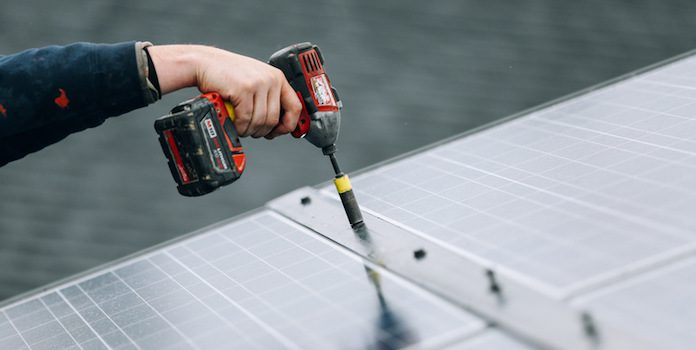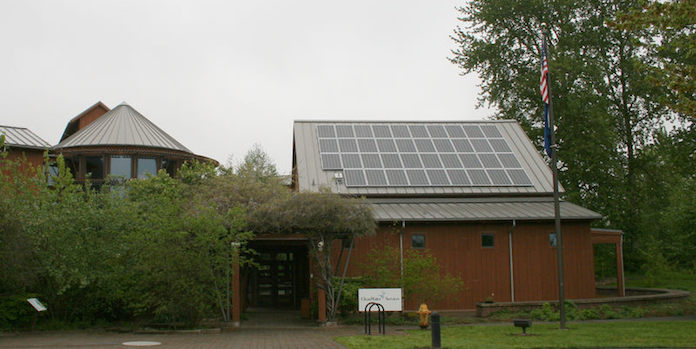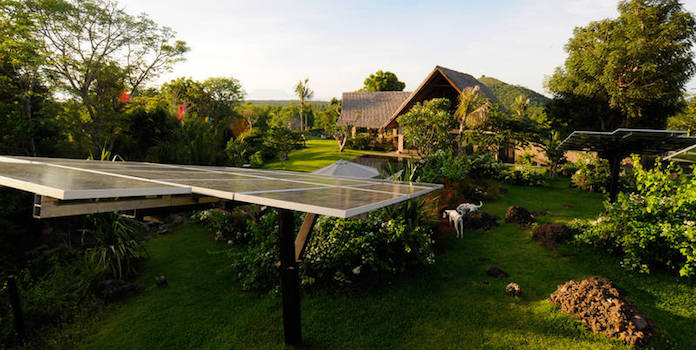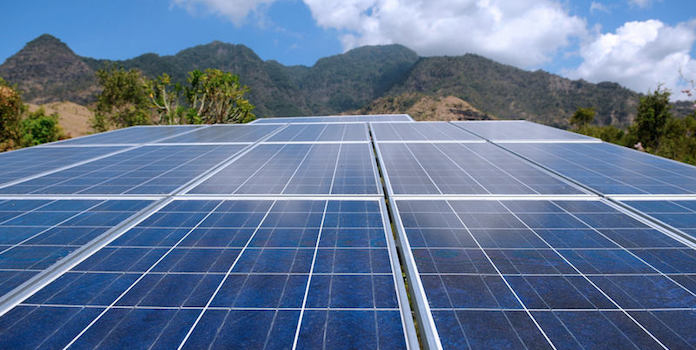Are Solar Panels Worth It?
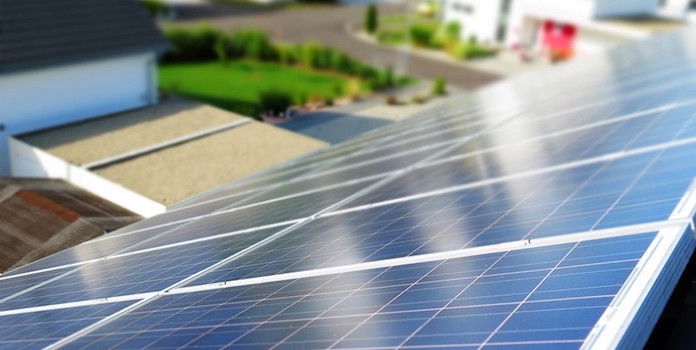
Thinking about going solar but unsure if solar panels are worth it?
We’ve all heard how you can save thousands going solar! If you’ve ever contacted a solar company or seen their advertisements, that’s probably what you’ve been told at least.
With all this sales-speak, you’re probably wondering if it’s all really true. And if all of solar’s apparent benefits appeal to you – reducing utility bills, improving home value, and helping the environment – you may still struggle with making the final decision to invest. You just want to be sure that any money you put into solar is a wise investment. Good for you!
To help you out, let’s take a critical eye towards the commonly spouted benefits of solar, both the financial benefits as well as the benefits to the environment and society, and answer that age-old question “Are solar panels really worth it?”
Is solar worth it for you?
For most people, whether or not it makes sense to install solar is a matter of cost vs savings.
Is it worth the expense?
The price of solar has dropped exponentially in the last 10 years. In 2009, installing solar cost $7.06 per watt. How much does it cost now? Well, the National Renewable Energy Lab found that, in 2016, the average cost hovered around $2.93 – a drop of 60%! Wow!
Even with this low cost, the question remains whether installing solar actually makes financial sense.
In all honesty, it depends on your total installation cost, electricity rates, and available financial incentives, especially the availability of net metering.
The federal government, state and local governments, and utilities all offer incentives that drop the price of going solar, allowing you to break even faster and save more money. Be sure to look up your state in our state guides or head over to the Database of State Incentives for Renewables & Efficiency to see what incentives are available in your area.
For each of our state guides we link to above, we work out savings estimates for a medium-sized 5kW installation that takes advantage of all state-wide incentives (like the federal tax credit and any state tax credits available).
To help you get an idea of what kind of savings you can expect from installing solar, here are a few highlights from those guides:
- New York: $26,284 in net profit with a 6-year payback. New York residents are eligible for some fantastic incentives that significantly drop the price of going solar, leading to high savings and fast payback periods.
- Oregon: $14,457 in net profit with an 11-year payback. While Oregon isn’t known for sunny skies and their electricity prices are fairly low, thanks to a handful of incentives, homeowners can save almost $15k over the life of a medium-sized solar installation.
- South Carolina: $19,902 in net profit with a 10-year payback. South Carolina offers an incredible 25% state tax credit which, when coupled with the 30% federal tax credit, means insanely low-cost installations.
All the states above offer great incentives to homeowners going solar. What about in states without many incentives? Take a look here:
- Kentucky: $13,225 in net profit with a payback of 15 years. Kentucky residents aren’t eligible for many financial incentives – besides net metering and the federal tax credit – and you can see that in the longer payback period. Even still, over the life of the installation, homeowners can save over $13k!
As you can see, for homeowners across the US, solar equals financial savings! (You can read about how we calculated those savings in each of the guides linked to above.)
Energy savings aren’t the only financial benefit to going solar either.
According to a 2015 study from the Lawrence Berkeley National Lab (a research organization funded by the federal government), purchasing and installing solar panels on your home increases the value of your home when you go to sell. Home buyers are willing to spend an extra $4 per watt on average for homes with solar, depending on the age of the solar installation.
At this rate, installing that 5kW installation could, potentially, raise the value of your home by $20,000! The study looked at 22,000 home sales – 4,000 of which had solar installed – in 8 different states from 1999 to 2013. Of course, your specific area and circumstances could vary from the findings of this study, but it bodes well for solar homeowners in general.
Increasing the value of your home probably isn’t first on your mind when you install solar, but it’s certainly a huge glob of icing on the cake!
Now keep in mind, that added value is only for solar installations purchased and owned by the homeowner. According to another study by LBNL of Southern California home sales, solar installations financed through leases and PPAs don’t add any value to a home, though they don’t detract from the value either.
Is it worth the time and maintenance?
If your time is what you value, you may wonder if solar power is worth the effort to select the panels, talk to installers, and maintain the panels throughout their lifetime. Just sticking to your energy status quo might sound like the easiest route.
You might be in for a pleasant surprise though. With solar booming so much in the last 10 years, solar companies are doing everything they can to differentiate themselves from the pack, and that includes creating streamlined efficient customer experiences.
Most solar companies have the entire process locked-down – from the initial sales visit to installation and city inspections.
If you work with a large company, they’ll typically give you a project manager that helps you along the way and will even fill out all the paperwork for the utility or city on your behalf and simply send it over to you for your signature via email or snail mail.
The whole process is so painless that, for most of the installation, you don’t even need to be home!
Once your system is up and running, monitoring software makes keeping an eye on your installation super easy. Just log online and you can see your energy production trends, energy savings, and whether there are any issues.
A lot of homeowners worry about selling their home after installing solar, and it’s a legitimate concern! Some home buyers are scared of solar installations – particularly if they’re financed through leases or PPAs.
However, most solar companies that offer leases have specific departments dedicated to helping home sales go smoothly. They’ll work with the buyers and realtors to make sure everyone is on the same page and to answer any questions. For the vast majority of home sales, transferring over a lease or PPA agreement goes off with few hitches.
In fact, the LBNL study mentioned above of Southern California homes found that leased solar didn’t negatively affect the home sale at all: the value didn’t decrease and homes weren’t on the market any longer than similar non-solar homes.
Of course, this study was in Southern California, where solar abounds and most people are at least aware that it is a very common investment. If you live in an area without much solar, you’ll likely have a harder time selling your solar home. Hopefully, as it becomes more and more common, solar will be less of a question mark to homebuyers and more of a selling point!
If you purchased your solar outright, selling your home is an easier process, as most homebuyers aren’t as fearful of homeowner-owned systems. You can transfer your loan payments to the new homeowner or simply use the premium the buyers paid for the home to pay off the remaining portion of the loan.
Either way, selling a home with solar just isn’t really a big deal!
Is solar worth it for society and the environment?
Okay, so solar is beneficial from an individual perspective, but what about if we step back and look at society and the environment as a whole? Is solar still valuable?
Are the environmental benefits worth it?
If you value a healthy environment, then going solar is worth it. Hands down. There’s really no question about it.
Yes, solar manufacturing can get messy sometimes – we’ve all heard the handful of horror stories about accidents spilling hazardous waste into streams or fields. Overall though, solar energy is a much, much cleaner fuel than coal or natural gas (which together account for 2/3 of all electricity generation in the US).
While producing electricity, solar panels produce absolutely zero emissions. Compare this to a typical coal-fired power plant, which puts out an estimated 3.5 million tons of CO2 each year, as well as other air-borne pollutants like sulfur dioxide, nitrogen oxide, particulates, and even mercury.
How much of an impact will you have by installing solar on your own roof? SolarCity estimates that a typical solar roof, over 30 years, offsets the carbon that would come from burning 166,000 pounds of coal or 17,000 gallons of gasoline.
You’re not going to solve global warming by installing solar panels on your home, but there’s strength in numbers. Once millions and millions of homeowners install solar and utilities continue to construct huge solar power plants, we’ll start to see real decreases in emissions.
In fact, we’re already beginning to see this happen, driven mostly by a phenomenon known as the Prius Effect or conspicuous conservation. Like seeing a Prius in your neighborhood and deciding you really need one too, studies find that installing solar on your home influences your neighbors to do the same thing.
In fact, the biggest driver towards the growth of solar in a neighborhood is actually having neighbors that have installed solar. Before you know it, your little choice can make a big impact.
So if the environment is what you value, going solar is worth it.
Is it a worthwhile choice for the economy?
Solar is great for the environment, but what about the impact of your choice to go solar on the economy?
There’s been a lot of talk in 2017 about resurrecting the dying coal industry, but that industry has been dying for a while. In 1990, the coal industry employed 136,000 people. By 2005, that number had dropped to 72,000. By June 2017, that number had plummeted to just 50,800 people – just a fraction of the total from 30 years ago.
Compare this decline to the solar industry’s insane growth in employment just over the last few years. First off, in 2016 the solar industry employed 260,000 individuals – 2x more than the coal industry in 1990. Now consider that, in just one year (2015-2016), solar employment grew 25%! In fact, solar energy now employs more Americans than coal, oil, and gas combined.
On top of all this, solar is a very hands-on business model. Companies typically need many local people ‘on the ground’ to move projects from start to finish, including installers, project managers, sales staff, and designers.
For many of these positions (save maybe designers), it would be hard to outsource these to remote locations outside the US, meaning your money is going to helping homegrown businesses employing local people. Local job growth in a burgeoning industry? What better way is there to support the economy?
How to assess whether solar is worth it for you
Assessing whether solar is worth it for you is actually pretty straightforward. Obviously, the environmental and social benefits are fairly similar across the board for all homeowners, but the financial benefits change greatly from one home to the next.
To find out whether solar really makes sense for you, you need to create a customized savings estimate. For the most detailed, accurate estimate, you’ll need to talk to a few installers who can measure your roof and figure out exactly how many panels you need.
Before all that though, you can create a basic estimate yourself just to get a rough idea of what to expect. To do this, you’ll need a few basic pieces of information:
- Your electricity price ($/kWh) – This is the most important piece of your solar savings. If your electricity prices are expensive, you’ll be able to save money easily by ditching the utility and producing your own, cheaper electricity. Utilities also increase their electricity prices each year and this rate of increase also affects your prices. The faster the increase, the more you can save. In the US, the national average is 2.6% increase each year, though that varies greatly by state. Take a look at this graph from the EIA to calculate your own state’s rate of increase.
- Your total installation cost – The typical solar installation costs around $3 to $4 per watt (varies depending on the source and location). Obviously, the lower the cost, the faster you’ll be able to recoup your investment through your savings.
- Financing type – Loans and leases add additional costs to your total installation. By paying cash, you avoid any of these additional fees. Taking out a 15-year loan with 5% interest to pay for a medium-sized installation adds around $8,000 to your total installation cost, so be sure to research all your financing options before making a decision!
- Your estimated solar production – Obviously, the more electricity your installation produces, the faster you’ll see a return on your investment and the more money you’ll save. The location has everything to do with how much electricity your system will produce. A 5kW installation in Arizona – one of the best places to go solar in the country – will produce more electricity than a 5kW installation in Minnesota. The best way to estimate your energy production is to head over to PVWatts, the National Renewable Energy Lab’s free online solar production calculator, and plug in your location and system size (start with 5kW if you’re not sure about size). The calculator will then spit out how much electricity your installation will produce each year.
Once you have all this information, you’ve got everything you need to calculate your savings! For a detailed description of the process, check out our article How Long Does It Take For Solar Panels To Pay Off? but let’s quickly go over the process here as well:
- Step 1: Calculate how much electricity your solar installation will produce in its lifetime. With solar panels lasting around 25 years, this part’s pretty easy. Just take what PVWatts estimated for your annual production and multiply by 25. If you’re good with spreadsheets, you can also add in solar panel degradation to the mix. Solar panels typically put out about 0.8% less electricity each year due to wear and tear, so if you want to be more accurate, add this to your calculation.
- Step 2: Next, you need to figure out how much it would cost to purchase the same amount of electricity your system will produce over its lifetime, but from the utility. Did you find your electricity price and rate of increase? Good. This is where spreadsheets come in handy again. Multiply each year’s energy production by the $/kWh utility rate. For example, if your system produces 10,000 kWh during the first year and your utility charges $0.13 per kWh, the total for Year 1 would be $1,300. Repeat for each of the next 25 years. (Google Spreadsheets is free, FYI. Use it!).
- Step 3:. The final step, and this is the fun part! To find your total savings going solar, simply subtract your total installation cost from the total electricity cost from the utility (what you calculated in Step 2). For example, if you spent $12k total on your solar installation, but would’ve spent $25k purchasing all that electricity from the utility over the next 25 years, your total savings are $13k. Just an example, but not too bad (and actually pretty reasonable)!
Now go out and try it yourself!
Are solar panels worth it?
So in the end, are solar panels worth it? Absolutely yes – as long as it makes financial sense for you! Nobody likes vague answers like this, but it’s the truth. Be sure to calculate your savings and reach out to a few installers to get customized quotes for your own roof.
No matter where you live, try to lower your installation costs as much as possible. Take advantage of all incentives. Look for different financing options. Shop around. One of the best ways to drop your total cost going solar is to simply get multiple quotes! Homeowners who reach out to several installers are typically able to save quite a bit of money, just by giving themselves options!
And don’t just contact the big installers like SolarCity and Sunrun. Oftentimes, local installers are actually about 10% cheaper than the big boys! This can be a great way to drop your overall cost to go solar.
For the vast majority of homeowners, going solar is a great financial investment, just do your homework beforehand!
Image Credit under CC License from Pixabay – 1 & Flickr – 2, 3, 4, 5

